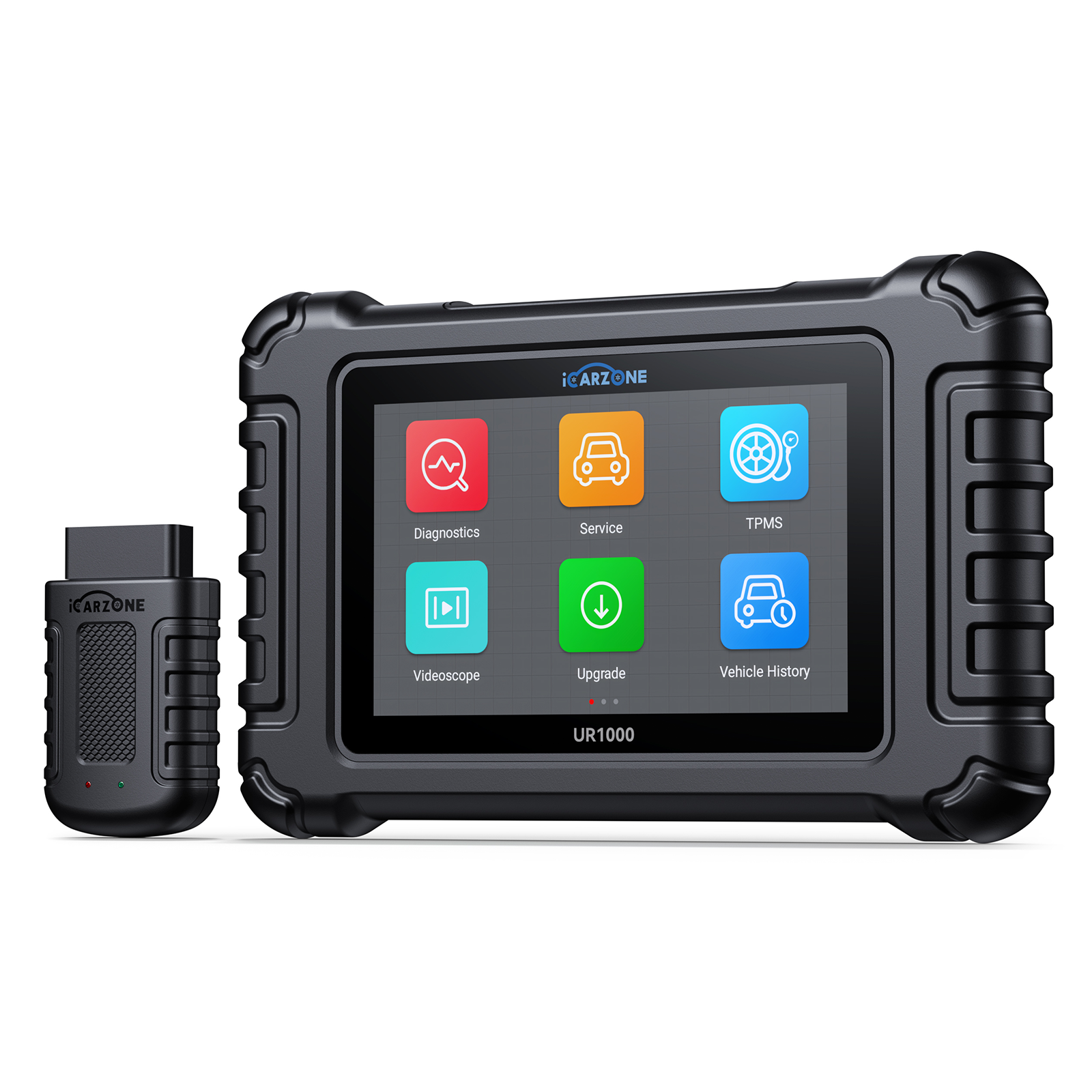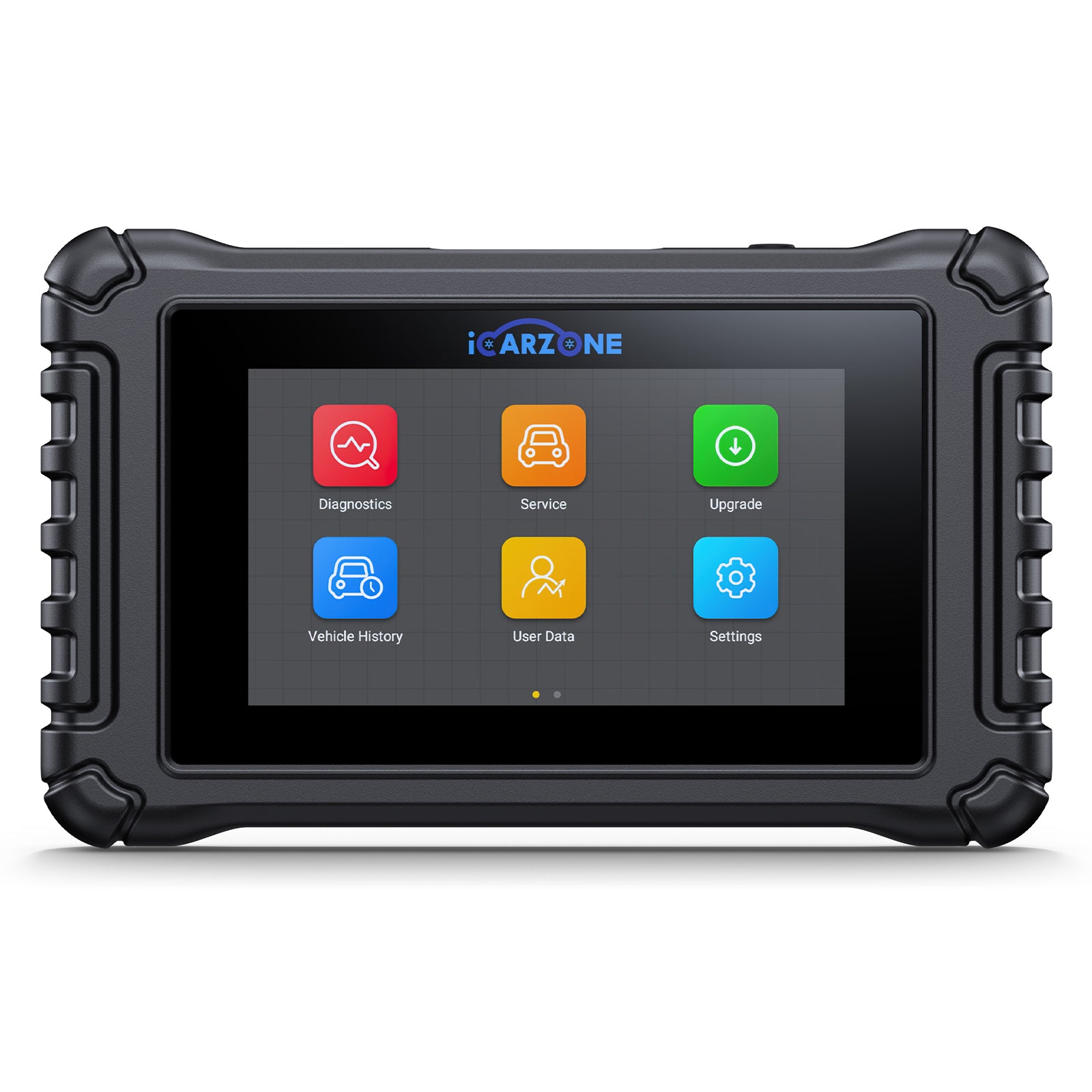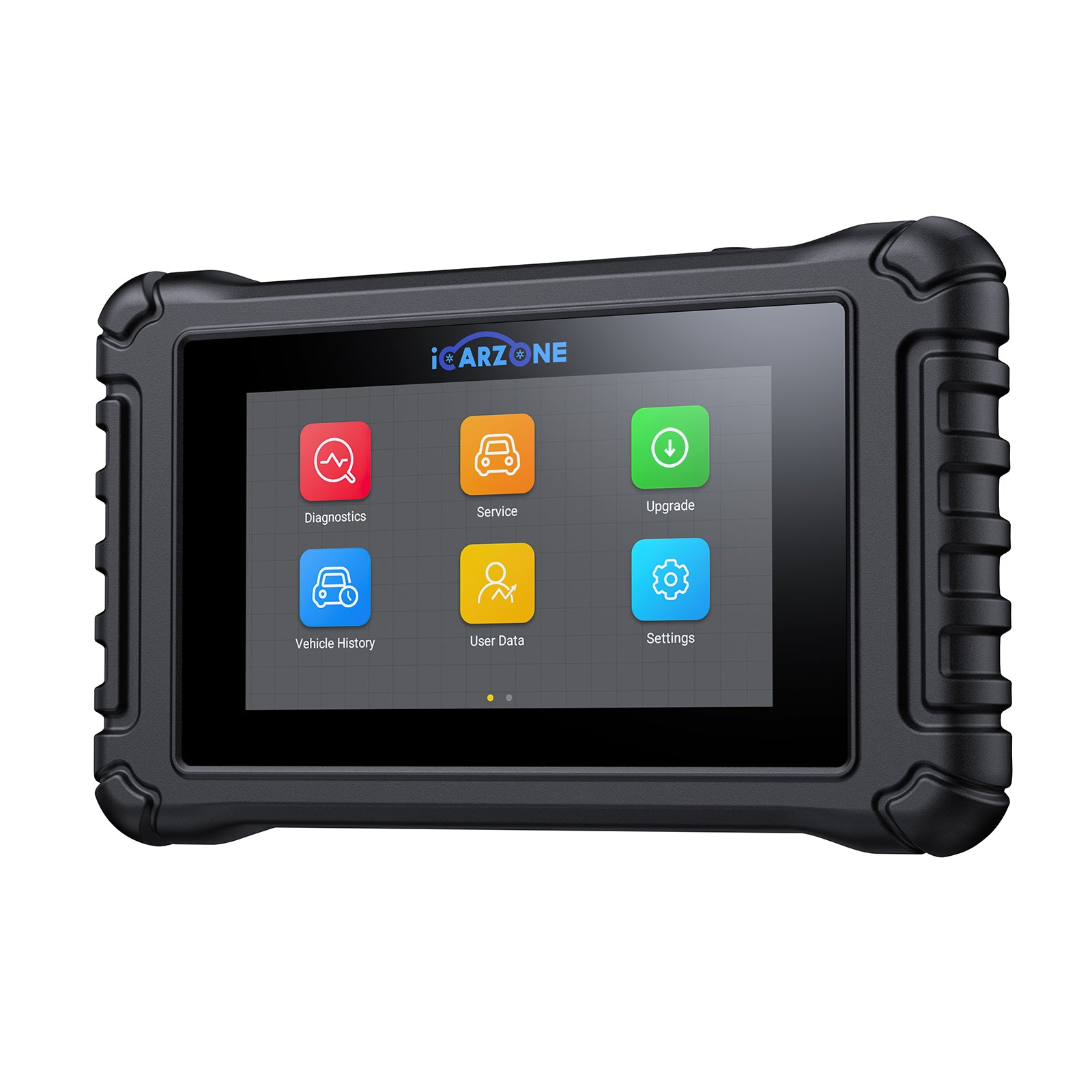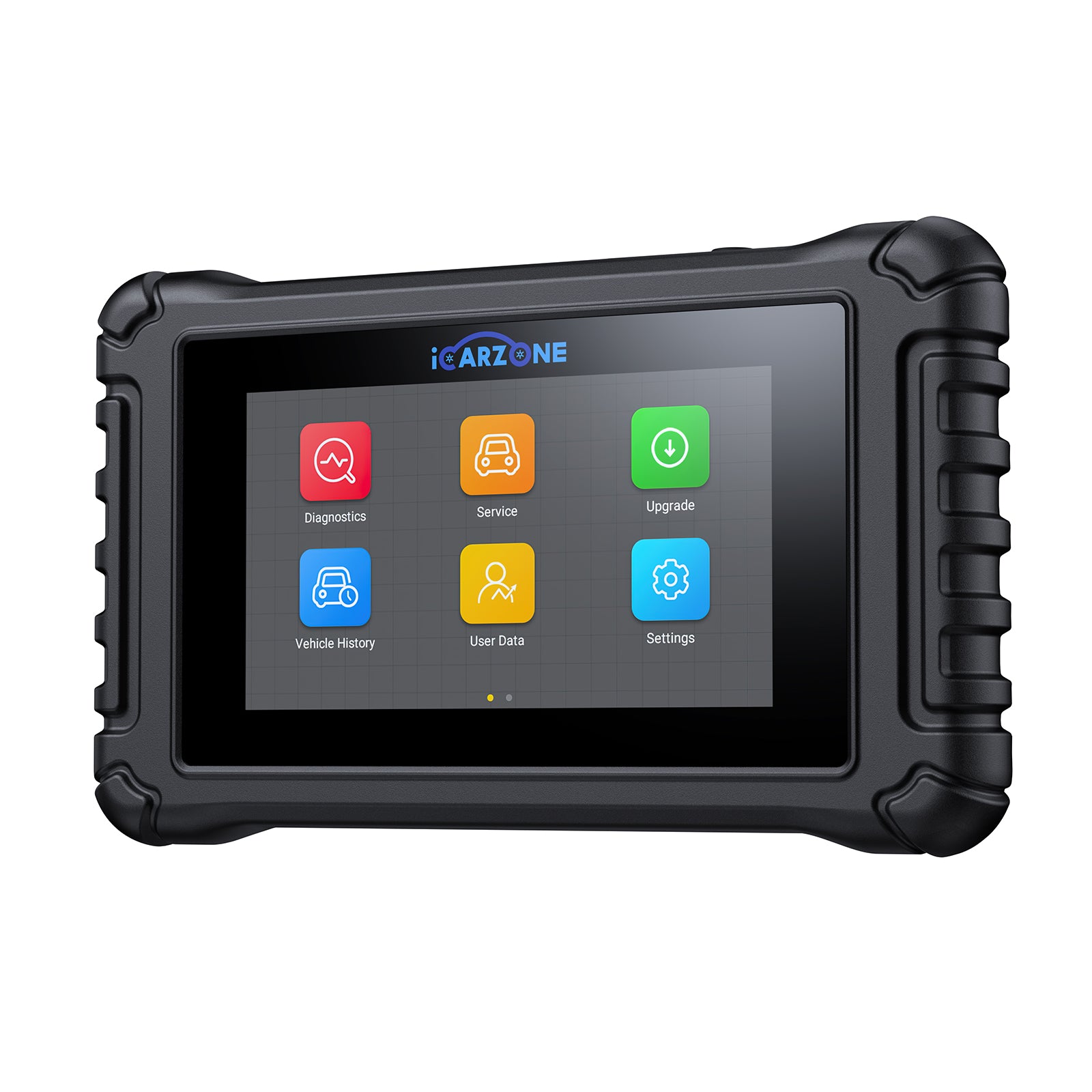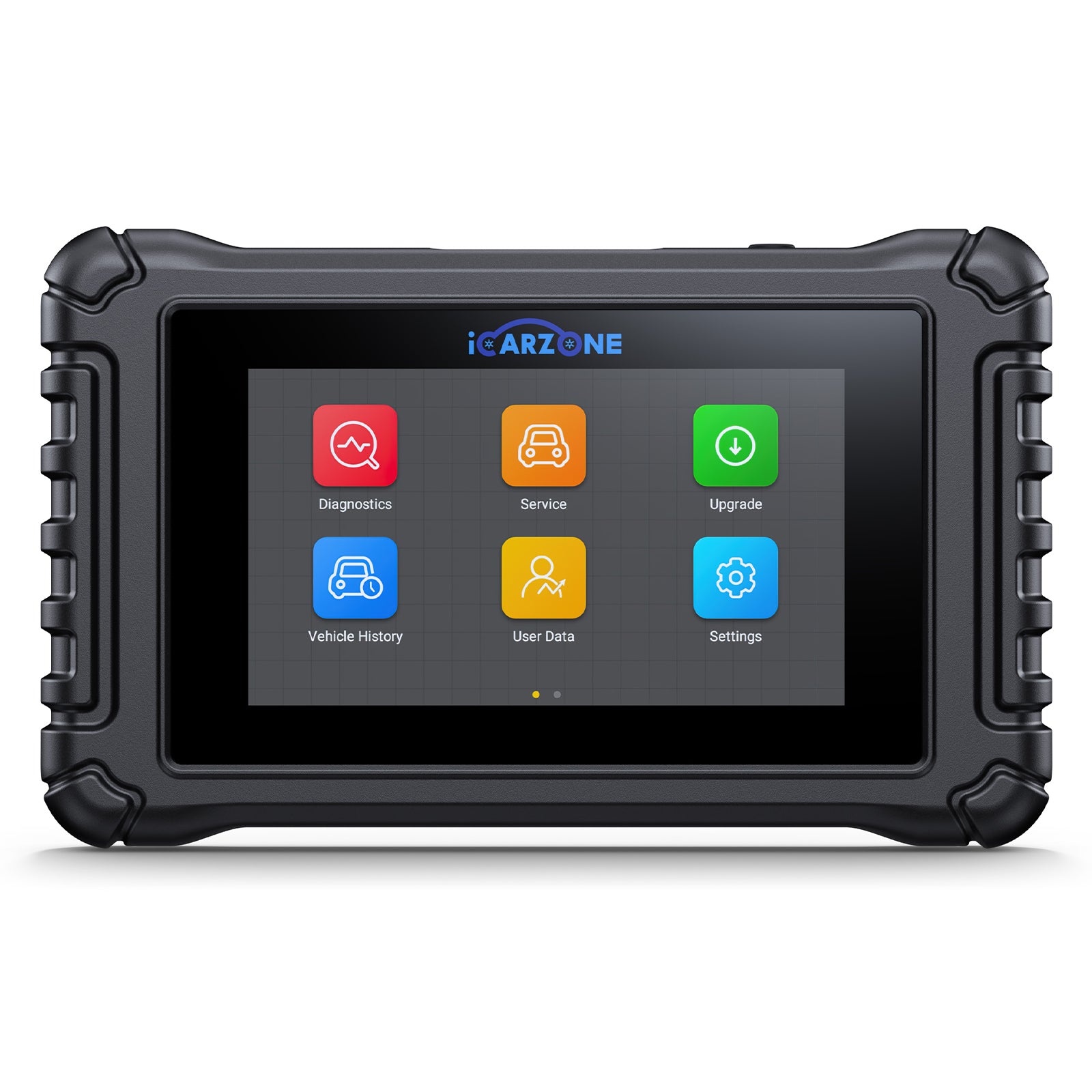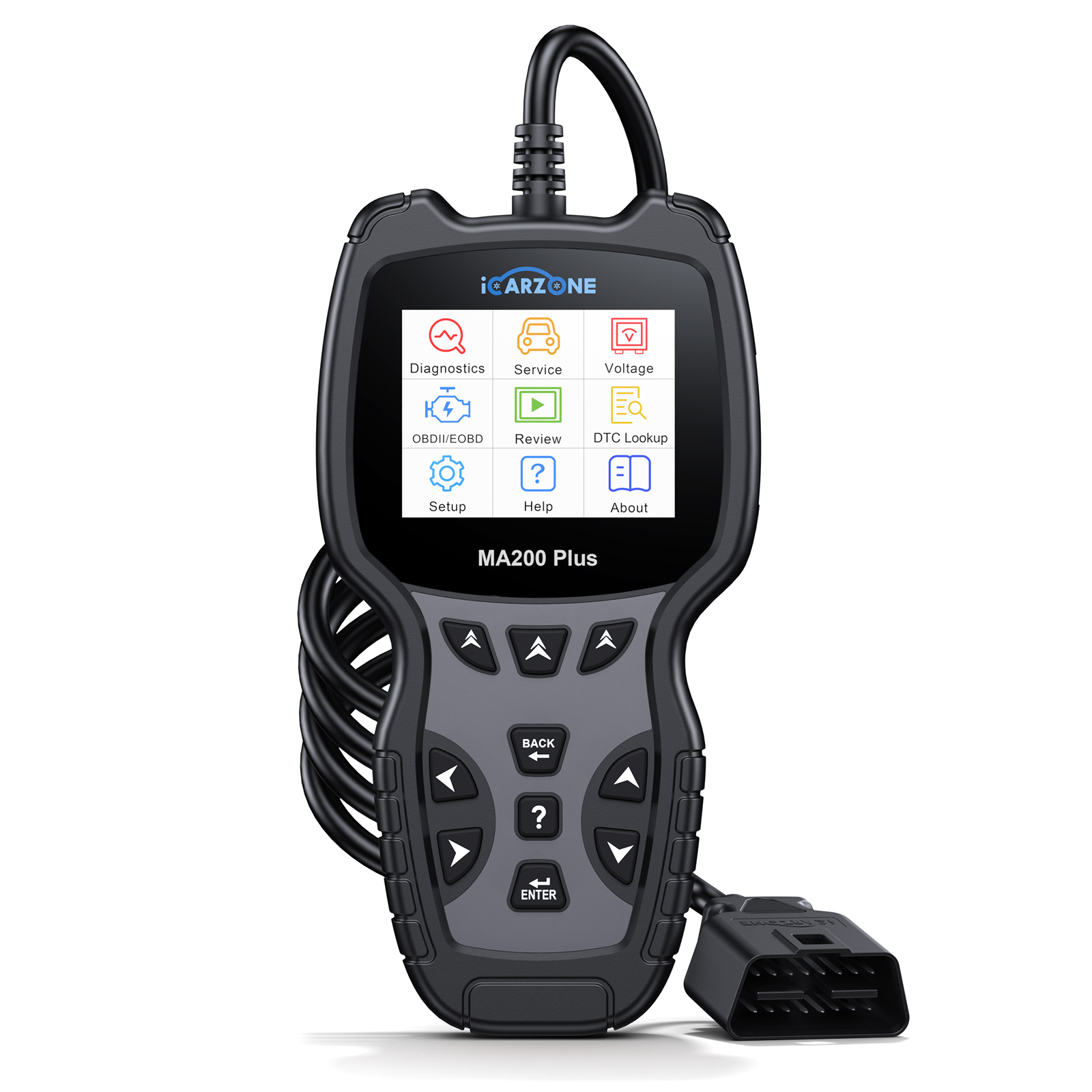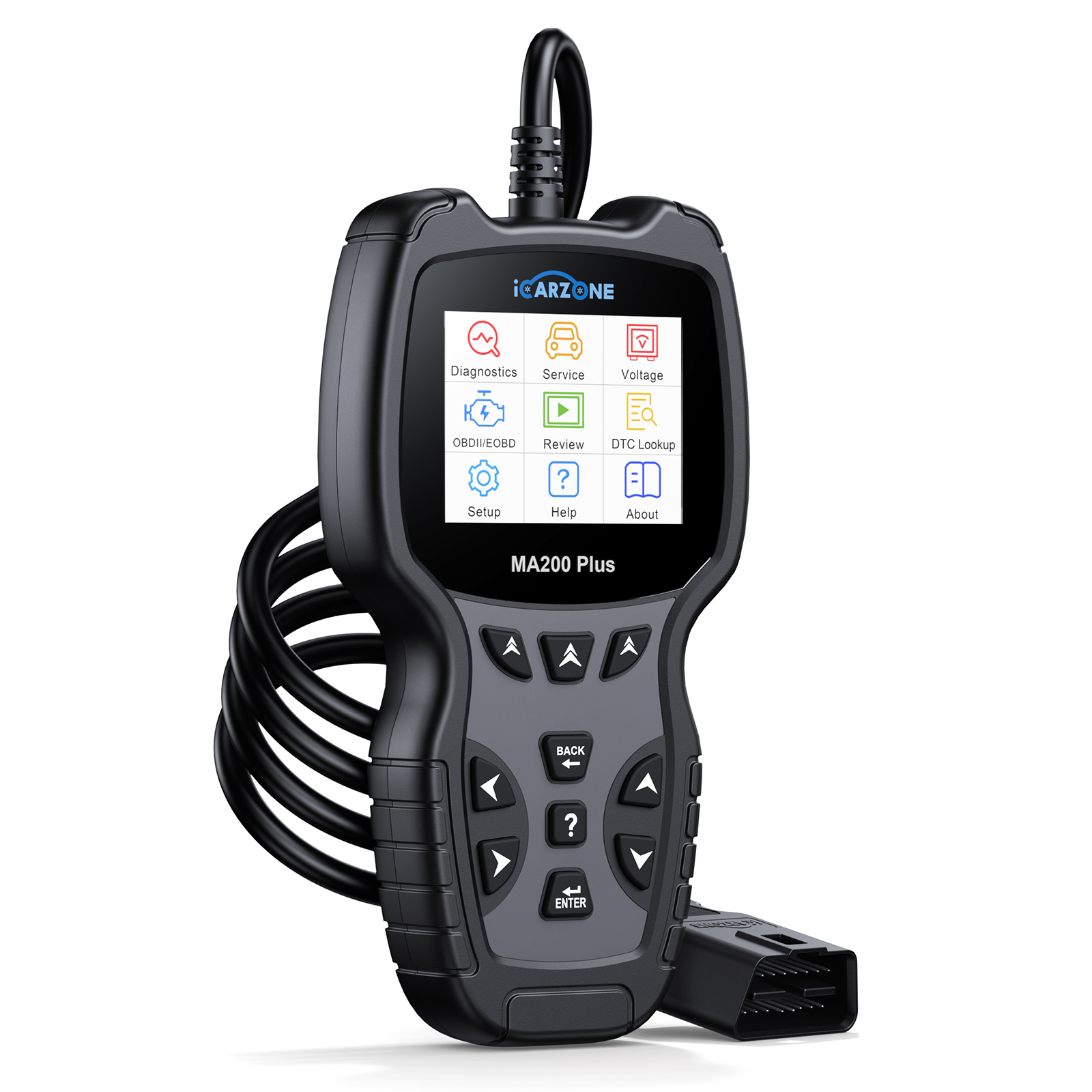P0122 Code: Throttle Position Sensor A Circuit Low Voltage – Causes & Fixes | iCarzone

P0122 Code: Throttle Position Sensor A Circuit Low Voltage
Fix P0122 throttle sensor issues with expert guidance. Learn diagnosis techniques using the iCarzone UR1000, common causes, and step-by-step repair solutions.
Diagnose P0122 With UR1000 →1. What is the P0122 Code?
The P0122 diagnostic trouble code indicates a "Throttle Position Sensor (TPS) A Circuit Low Voltage" condition. This code specifically refers to an abnormally low voltage signal from the primary circuit (Circuit A) of your vehicle's throttle position sensor, which monitors the position of the throttle valve.

Throttle Position Sensor Basics
The throttle position sensor (TPS) is a critical component in modern fuel-injected engines, working closely with the Engine Control Module (ECM) to optimize engine performance: Function: Converts throttle valve position into an electrical signal the ECM can interpret Signal Type: Typically a 0.5V (closed throttle) to 4.5V (wide open throttle) DC voltage signal ECM Use: Uses TPS data to adjust fuel injection, ignition timing, and transmission shifting Redundancy: Many systems include a secondary circuit (Circuit B) for safety and verification
How the ECM Detects P0122
The ECM continuously monitors the TPS voltage signal under all operating conditions: It supplies a stable 5V reference voltage to the sensor It measures the returned signal voltage from the TPS output wire It expects the voltage to increase smoothly from ~0.5V at idle to ~4.5V at wide open throttle It checks for consistency between the primary (A) and secondary (B) circuits (if equipped)
P0122 is triggered when the ECM detects that the TPS A circuit voltage falls below the minimum acceptable threshold (usually below 0.2-0.3V) for a specified duration, or when the voltage doesn't change appropriately as the throttle is moved.
2. Why Does P0122 Happen? Common Culprits
P0122 occurs when the TPS signal voltage drops below acceptable levels. Here's a detailed breakdown of the most common causes, based on repair data and technical service bulletins:
Wiring and Connection Issues (42% of Cases)
Electrical problems in the TPS circuit are the leading cause of P0122 due to the sensor's exposed under-hood location: Damaged Wiring: Frayed, cut, or crushed wires create high resistance or short circuits Corroded Connectors: Moisture and corrosion increase resistance in the TPS connector Loose Connections: Vibration can loosen terminals, causing intermittent voltage drops Short to Ground: Wire insulation damage causes signal wire to contact vehicle ground
Case Study: A 2016 Hyundai Elantra with 92,000 miles presented with P0122 and intermittent stalling. Inspection revealed a worn section of TPS wiring that had rubbed against the intake manifold, creating a partial short to ground that dropped signal voltage below 0.2V during acceleration.Throttle Position Sensor Failure (35% of Cases)
- Internal Electrical Failure: worn resistive element creates open circuits or dead spots
- Mechanical Wear: Shaft or wiper arm damage causes inconsistent contact with resistive material
- Contamination: Oil, dirt, or carbon deposits interfere with sensor operation
- Manufacturing Defect: Poor quality control in sensor production (more common with aftermarket parts)
Voltage Supply Issues (15% of Cases)
- 5V Reference Voltage Drop: ECM power supply issues reduce voltage to sensor
- Ground Circuit Problems: High resistance in sensor ground circuit affects signal
- Failing ECM: Internal voltage regulator issues (rare but serious)
- Other Device Loading: Shared 5V circuit with other sensors causing voltage drop
Other Causes (8% of Cases)
- Throttle Body Issues: Binding throttle plate affects sensor movement
- Aftermarket Modifications: Incorrectly installed performance parts
- ECM Software Issues: Calibration errors in voltage threshold settings
- Physical Damage: Impact to throttle body or sensor during engine work
3. How to Spot P0122 Symptoms
P0122 symptoms directly relate to the ECM's inability to accurately determine throttle position, affecting engine performance and drivability:
Primary Symptoms
- Illuminated Check Engine Light – Consistent indicator with P0122 stored in memory
- Idle Issues – High, low, or fluctuating idle speed due to incorrect TPS data
- Acceleration Problems – Hesitation, stumbling, or lack of power when pressing the gas pedal
- Engine Stalling – Especially at idle or when coming to a stop
Secondary Symptoms
- Limited Power – ECM may enter limp mode, restricting engine power to protect components
- Transmission Shifting Issues – Automatic transmissions may delay or harshly shift due to missing TPS data
- Fuel Economy Reduction – 20-30% decrease in MPG from incorrect fuel injection timing
- Difficulty Starting – Extended cranking or reluctance to start, especially when warm
Symptom Patterns
P0122 symptoms often follow specific patterns that help identify the root cause: Intermittent Symptoms: Typically indicate loose connections or wiring issues that worsen with vibration Progressive Symptoms: Gradually worsening performance suggests sensor wear or corrosion Sudden Onset: Usually caused by acute wiring damage or sensor failure Temperature-Related: Symptoms that change with engine temperature often point to sensor internal issues
4. Vehicles Most Likely to Get P0122
Certain vehicles develop P0122 more frequently due to TPS design, wiring routing, and operating conditions:
Domestic Models
- Ford F-150 (2009-2014) – 5.4L and 6.2L V8 models prone to TPS wiring harness wear. TSB 11-10-7 addresses updated harness routing.
- Chevrolet Silverado (2014-2018) – 5.3L V8 engines experience TPS connector corrosion in high-humidity regions.
- Dodge Ram 1500 (2013-2018) – Electrical issues in TIPM (Totally Integrated Power Module) affect TPS voltage supply.
- Jeep Wrangler (2012-2018) – Off-road use exposes TPS wiring to damage from debris.
Import Models
- Toyota Camry (2012-2017) – 2.5L four-cylinder models have TPS that develops dead spots around 30% throttle.
- Honda Civic (2012-2015) – Throttle body contamination leads to TPS signal issues.
- Hyundai Elantra (2011-2016) – TPS wiring harness prone to rubbing against engine components.
- Volkswagen Jetta (2011-2018) – Electronic throttle control module (including TPS) failures common after 80,000 miles.
Common Design Factors
Vehicles prone to P0122 typically share these characteristics: TPS mounted directly on throttle body in high-heat area Wiring harness routed near moving components or heat sources Exposed connectors without proper weather sealing Electronic throttle control systems with integrated TPS (failure affects entire unit) Vehicles with high mileage (TPS typically lasts 80,000-150,000 miles)
5. DIY Diagnosis Steps (With UR1000)
Accurate diagnosis of P0122 requires testing TPS signal voltage, circuit integrity, and sensor operation. The iCarzone UR1000 provides critical live data to identify whether the issue is in the sensor, wiring, or voltage supply.
Stage 1: Initial Data Collection (15 minutes)
- Connect UR1000 Scanner – Plug into OBD-II port and power on. Select your vehicle make/model/year.
- Read Complete DTC History – Record P0122 and any related codes (P0121, P0123, P0124 for other TPS issues).
- Check Freeze Frame Data – Note conditions when code was set (throttle position, RPM, load).
- Monitor Live TPS Data – With engine running at idle, observe: TPS Voltage (should be 0.5-1.0V at idle) TPS Percentage (typically 0-15% at idle) TPS Circuit A/B Comparison (if equipped) 5V Reference Voltage
Stage 2: Functional Testing (25 minutes)
- TPS Signal Test: With UR1000 displaying live TPS data, slowly press and release throttle pedal Voltage should increase smoothly from ~0.5V to ~4.5V with no drops or spikes Note any dead spots where voltage doesn't change with pedal movement Voltage should return to idle specification when pedal is released
- Key-On/Engine-Off Test: Turn ignition to ON position without starting engine Monitor TPS voltage at key-on (should be 0.5-1.0V) Slowly move throttle by hand (if accessible) and observe voltage change Look for voltage drops below 0.2V that would trigger P0122
- Circuit Integrity Check: Use UR1000 to check 5V reference voltage (should be 4.8-5.2V) Verify ground circuit quality through scanner data Check for other codes indicating shared circuit issues
Stage 3: Physical and Electrical Testing (30 minutes)
- Visual Inspection: Locate TPS (mounted on throttle body, usually with 3-4 wire connector) Inspect wiring harness for damage, wear, or corrosion Check connector for bent pins, corrosion, or water intrusion Verify sensor mounting is secure with no signs of damage
- Resistance Testing: Disconnect battery and TPS electrical connector Consult service manual for TPS resistance specifications Measure resistance between signal and ground pins (typically 500-7,000 ohms depending on position) Check for infinite resistance (open circuit) or zero resistance (short)
- Voltage Testing: Reconnect battery with TPS connector disconnected Turn ignition to ON (don't start engine) Measure voltage at connector's reference pin (should be 4.8-5.2V) Check ground pin for continuity to vehicle ground (less than 0.5 ohms)
| Condition | UR1000 Data Indicators | Physical Inspection Findings |
|---|---|---|
| TPS Sensor Failure | Abrupt voltage drops, dead spots, non-linear response | Resistance readings outside specs, internal damage |
| Wiring Issues | Intermittent voltage drops, voltage varies with movement | Damaged insulation, loose connections, corrosion |
| Voltage Supply Problem | Low reference voltage (<4.5V), consistent low signal | Shared circuit issues, ECM power supply problems |
| Mechanical Throttle Issues | Erratic voltage with smooth pedal movement | Binding throttle plate, damaged throttle linkage |
6. How to Fix P0122: Step-by-Step Solutions
The appropriate repair method depends on your diagnosis findings. Below are detailed procedures for each common fix:
Throttle Position Sensor Replacement
For confirmed TPS sensor failure (35% of P0122 cases):
- Safety Preparation: Disconnect negative battery terminal Locate throttle body and TPS (usually on side of throttle body) Gather supplies: new TPS, socket set, screwdriver, dielectric grease
- Sensor Removal: Disconnect electrical connector (press tab and pull straight back) Note sensor orientation for reinstallation (take photo) Remove mounting screws (typically 2-4 small bolts) Carefully remove sensor from throttle body
- Throttle Body Inspection: Check throttle plate movement for binding Clean throttle body with specialized cleaner if contaminated Inspect throttle shaft for excessive play or damage
- New Sensor Installation: Compare new sensor to old one to ensure compatibility Position sensor correctly (align with throttle shaft) Hand-tighten mounting screws Torque to specification (usually 5-10 ft-lbs)
- Electrical Connection: Apply dielectric grease to connector terminals Reconnect electrical connector until it clicks Reconnect battery terminal
- Calibration and Testing: Turn ignition to ON without starting (wait 10 seconds) Start engine and let idle for 2 minutes Use UR1000 to monitor TPS voltage at various positions Clear codes and test drive to verify repair
Wiring and Connector Repair
For electrical circuit issues (42% of P0122 cases):
- Identify Problem Area using voltage drop testing and visual inspection
- Connector Repair: Disconnect battery and TPS connector Remove corrosion with electrical contact cleaner and wire brush Repair bent pins using small screwdriver or pin tool Replace damaged terminals if necessary Apply dielectric grease to terminals
- Wire Repair: Cut damaged section of wire (allow 1 inch on each side) Strip 1/4 inch insulation from wire ends Use heat-shrink butt connectors (preferred) or soldering Apply heat to shrink tubing Wrap repaired area with electrical tape Secure with wire loom for protection
- Protective Measures: Reroute wiring if rubbing against components Secure with zip ties to prevent movement Add loom or sleeve to vulnerable sections Ensure proper routing away from heat sources
- Verification: Test circuit continuity (should be <0.5 ohms) Check for short circuits to ground Use UR1000 to verify TPS voltage at all positions
Voltage Supply Repair
For 5V reference or ground issues (15% of P0122 cases):
- Verify Reference Voltage at TPS connector (should be 4.8-5.2V)
- Check Shared Circuits: Identify other sensors on the same 5V circuit Disconnect one at a time to check for voltage recovery Replace any sensor causing excessive current draw
- Ground Circuit Repair: Locate TPS ground connection point Clean ground terminal and mounting surface Secure with star washer for good conductivity Apply anti-corrosion treatment
- ECM Testing (if necessary): Consult service manual for ECM pinout Test 5V output directly at ECM connector If low, ECM repair or replacement may be needed
Throttle Body Service
For contamination or mechanical issues:
- Throttle Body Removal (if severe contamination): Disconnect air intake hose Remove throttle body mounting bolts Disconnect TPS and any other connectors
- Cleaning Procedure: Use specialized throttle body cleaner (not carb cleaner) Spray and wipe throttle plate and bore Clean TPS mounting surface Reassemble after drying completely
- Linkage Adjustment: Check throttle cable adjustment (if equipped) Verify smooth movement throughout range Lubricate pivot points with dry lubricant if needed
7. P0122 Repair Costs & Pro Tips
Costs vary based on the repair method and whether you perform the work yourself:
DIY Repair Costs
-
TPS Sensor Replacement: $30-100
Includes: Aftermarket TPS ($25-90), hardware, dielectric grease -
Wiring/Connector Repair: $10-30
Includes: Connectors, wire, heat-shrink, contact cleaner -
Throttle Body Cleaning: $8-20
Includes: Throttle body cleaner, brushes, rags -
Ground Circuit Repair: $5-15
Includes: Terminal cleaner, anti-corrosion treatment
Professional Repair Costs
-
TPS Replacement (Pro): $150-300
Labor: 1-1.5 hours ($100-180), OEM TPS: $50-150 -
Wiring Repair (Pro): $180-350
Labor: 1-2 hours ($100-200), parts: $50-150 -
Throttle Body Service (Pro): $120-250
Labor: 1 hour ($100-150), cleaning supplies: $20-100 -
ECM Related Repair: $300-800
Most expensive due to ECM programming requirements
Expert Money-Saving Tips
- Test before replacing – 42% of P0122 cases are wiring issues, not sensor failures. Avoid unnecessary parts costs with proper diagnosis.
- Choose quality sensors – OEM or premium aftermarket TPS (Denso, Bosch) last 2-3x longer than budget sensors.
- Combine with regular maintenance – Clean throttle body when replacing TPS to prevent future issues.
- Check for TSBs – Many manufacturers have technical service bulletins covering P0122 repairs that may be warranty-eligible.
- Use UR1000 to verify repair – Confirm proper voltage range before completing the repair to avoid repeat trips.
- Address promptly – P0122-related fuel inefficiency costs $50-150 monthly in wasted fuel for daily drivers.
8. How to Prevent P0122 From Coming Back
Preventing P0122 requires maintaining the TPS, wiring, and related components to ensure reliable voltage signals:
Regular Maintenance Schedule
- Visual Inspections – Every 30,000 miles: Check TPS wiring for damage or wear Inspect connector for corrosion Verify secure mounting of sensor and harness
- Throttle Body Service – Every 60,000 miles: Clean throttle body to prevent contamination Inspect TPS during service Check throttle linkage for smooth operation
- Electrical System Checks – Every 12 months: Clean battery terminals and grounds Inspect charging system output (should be 13.5-14.5V) Check for voltage drops in critical circuits
Protective Measures
- Wiring Protection: Secure loose harness sections with zip ties Add wire loom to vulnerable areas Keep wiring away from heat sources and moving parts Apply dielectric grease to TPS connector annually
- Sensor Protection: Avoid spraying water directly at throttle body during cleaning Use quality air filters to prevent debris ingestion Address oil leaks promptly to prevent sensor contamination Choose OEM or premium sensors when replacement is needed
- Driving Habits: Avoid aggressive throttle inputs when engine is cold Allow proper warm-up before high-demand operation Use quality fuel to reduce throttle body deposits
Maintenance Tools & Products
- Cleaning Supplies: Specialized throttle body cleaner Electrical contact cleaner Soft bristle brushes for delicate components
- Electrical Maintenance: Dielectric grease Heat-shrink tubing assortment Terminal cleaning tools Digital multimeter
- Diagnostic Tools: UR1000 scanner for TPS voltage monitoring Wire brush for ground connections Torque wrench for sensor installation
Monitoring with UR1000
Regularly check these parameters to catch issues before they trigger P0122: TPS voltage at idle (should be stable 0.5-1.0V) Voltage sweep during throttle movement (smooth and linear) 5V reference voltage stability TPS percentage vs. actual throttle position correlation
9. P0122 FAQs
Short distances may be possible, but P0122 can cause stalling or power loss. For safety, limit driving until repairs are made, especially in heavy traffic.
Yes, internal TPS failure is a common cause of P0122. However, wiring issues are even more common, so test before replacing the sensor.
TPS sensors typically last 80,000-150,000 miles. Lifespan depends on operating conditions, contamination, and quality of the sensor.
Limited cleaning is possible for external contamination, but internal electrical issues require replacement. Never spray cleaner directly into the sensor.
Most modern ECMs automatically calibrate the TPS during initial startup, but some require a relearn procedure using a scanner like the UR1000.
Low battery voltage can cause temporary voltage issues, but P0122 specifically indicates a low signal from the TPS circuit, not general electrical problems.
P0121 is a range/performance issue, while P0122 specifically indicates low voltage in the TPS circuit. They can have similar causes but different diagnostic focuses.
Possibly. TPS sensors are often covered under powertrain warranties for 5 years/60,000 miles, depending on the manufacturer.
10. Final Thoughts
P0122 indicates a low voltage condition in the throttle position sensor's primary circuit, a critical issue that affects engine performance, fuel economy, and safety. This code is most commonly caused by wiring problems, connector corrosion, or sensor failure—issues that are generally repairable without extensive mechanical expertise.
The key to successful P0122 repair is accurate diagnosis using tools like the iCarzone UR1000 to monitor live TPS voltage, identify signal irregularities, and verify repairs. This targeted approach prevents unnecessary parts replacement and ensures the correct repair the first time.
Most P0122 cases can be resolved with either wiring repairs or TPS replacement, making it a manageable DIY project for those comfortable with basic electrical and mechanical work. Given the safety implications of throttle control issues, addressing P0122 promptly is essential for reliable vehicle operation.
With proper diagnosis, quality parts, and regular preventive maintenance—including periodic inspections of wiring and connectors—you can fix P0122 permanently and ensure reliable throttle position sensing for the life of your vehicle.
Diagnose TPS Issues Like a Pro
The UR1000 provides real-time TPS voltage monitoring and graphing to quickly identify P0122 causes and verify repairs with precision.
Get Your UR1000 Diagnostic Tool


